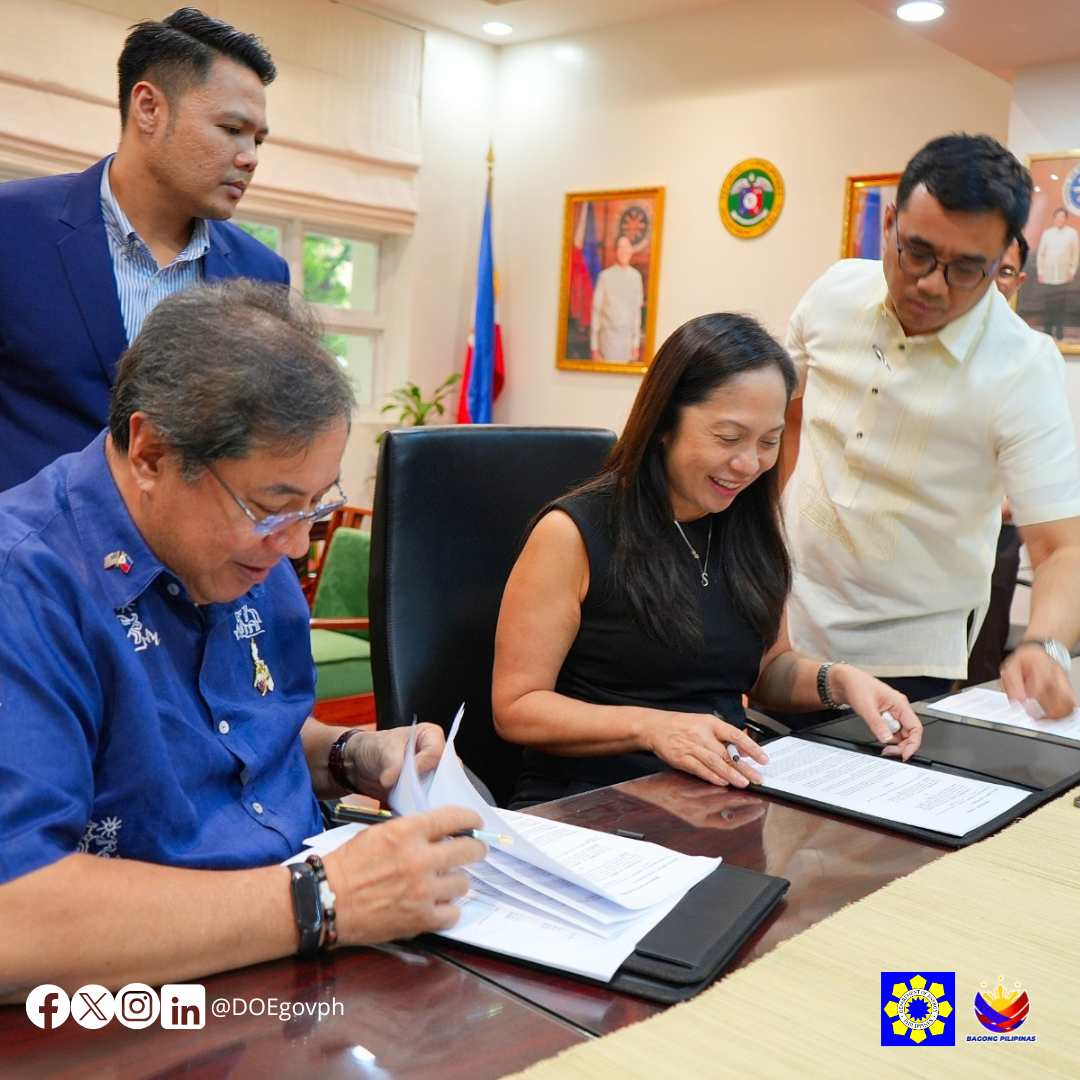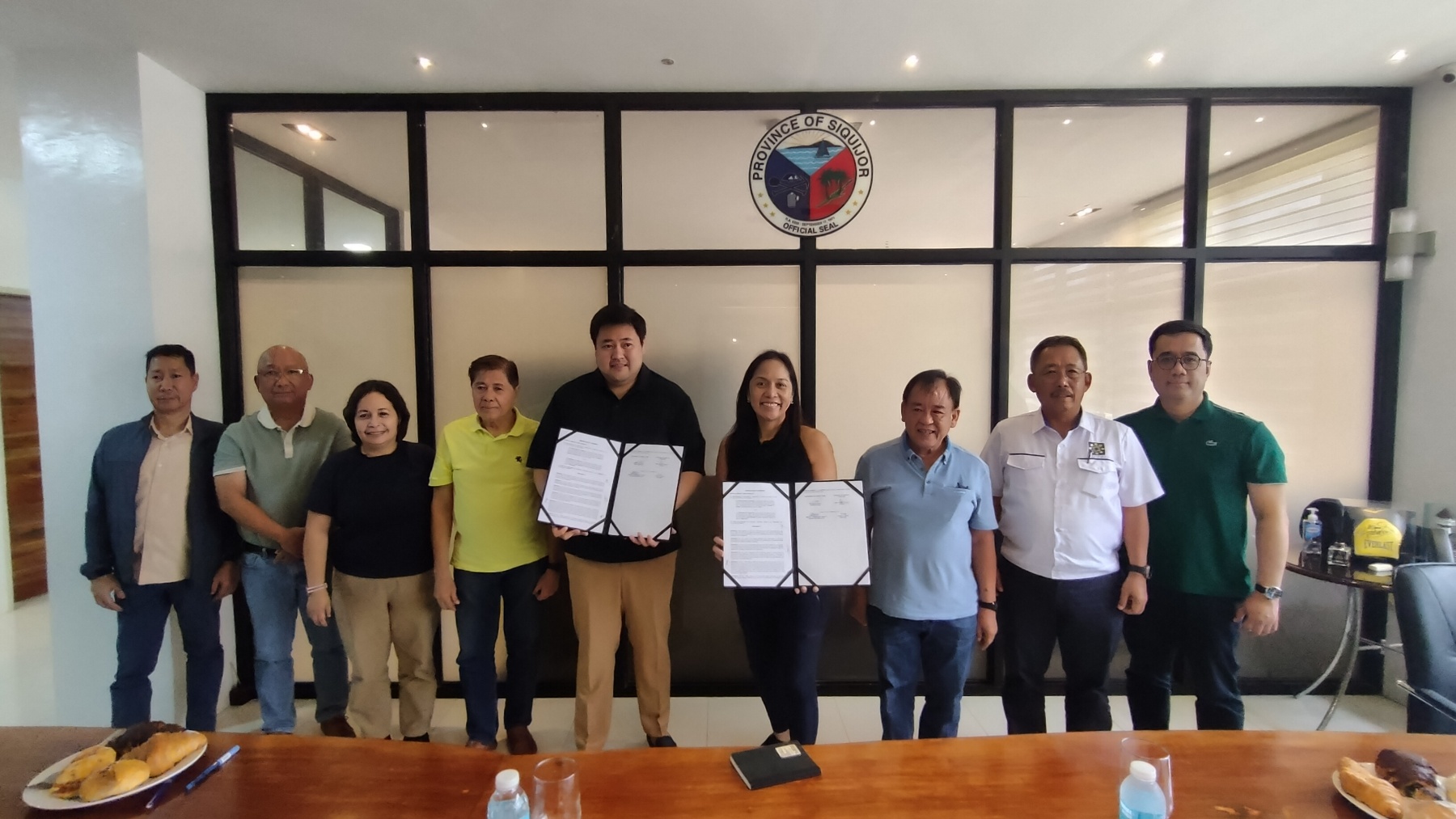DOE and DOH partner for sustainable energy in Philippine healthcare facilities

MEDIA RELEASE
03 July 2025


MEDIA RELEASE
03 July 2025

The Department of Energy (DOE) convened a virtual dialogue yesterday, 30 June 2025, with key industry stakeholders to further refine the draft Terms of Reference (TOR) for the fifth round of the Green Energy Auction (GEA-5), the Philippines’ first auction dedicated exclusively for offshore wind projects.
During the two-hour discussion, representatives from the DOE, other government agencies such as the Department of Environment and Natural Resources – Forest Management Bureau, Department of Health – Bureau of Quarantine, Department of Labor and Employment Energy Regulatory Commission, Maritime Industry Authority, National Power Corporation, National Resource Water Board, National Transmission Corporation, Philippine Coast Guard, Philippine Ports Authority, and the private sector engaged in a substantive exchange of views to ensure that the auction framework is practical, transparent, and well-aligned with the unique requirements of offshore wind development.
The DOE confirmed that GEA 5 will adopt a more holistic and balanced approach to bid evaluation, expanding beyond price criteria to include technical readiness, permitting progress, grid connection status, delivery timeline, and risk management. Responding to concerns raised by developers, the DOE underscored the importance of early coordination with the transmission network service provider and port authority. Developers are encouraged to submit infrastructure plans at the earliest stages to support inter-agency coordination, reduce bottlenecks, and enhance accountability.
The DOE also clarified that only bank guarantees, irrevocable standby letters of credit, or cash will be accepted as performance securities under GEA-5. Surety bonds will no longer be permitted.
To safeguard the integrity of the auction process, the DOE announced that delays exceeding three years due to developer default will result in the revocation of the Certificate of Award and the Certificate of Endorsement for the Green Energy Tariff. However, lenders’ “step-in rights” will be recognized, allowing them to assume project control before any revocation occurs.
The Department reaffirmed its commitment to continuous stakeholder engagement to further improve implementation and provide clarity. It also disclosed plans to publish a long-term Green Energy Auction roadmap, which will outline indicative timelines and capacity targets for future auction rounds.
“The energy transition requires more than just policy, it demands implementable rules, open dialogue, and strong partnerships,” said Undersecretary Rowena Cristina Guevara. “We are working to make the process more responsive to real project conditions and more consistent across the board.”
Participants welcomed the constructive and solution-oriented tone of the discussion. With 3,300 megawatts of offshore wind capacity targeted between 2028 and 2030, GEA 5 is regarded as a critical step in building renewable energy capacity, attracting investment, and enhancing long-term energy security.
The DOE underscored its resolve to ensure that the Green Energy Auction remains a fair, transparent, and effective platform in support of the country’s clean energy goals. Sustained coordination between the government and the private sector will be essential in delivering meaningful results. ###

Isang magandang balita para sa ating mga motorista! May roll back na, may discount pa!
According to Department of Energy Officer-in-Charge Sharon S. Garin, in addition to the anticipated fuel price rollback on 01 July 2025, an added benefit awaits drivers of Public Utility Vehicles (PUVs), Transport Network Vehicles (TNVs), and non-PUVs.
As of 30 June 2025, nine (9) oil companies have committed to provide fuel discounts to motorists affected by oil price fluctuations. This is in response to the President’s call to help Filipino families cope with the impact of volatile global oil prices.
For PUVs and non-PUVs, the oil companies offering fuel discounts include Petron, Shell, Caltex, Seaoil, Phoenix, PTT, Jetti, Clean Fuel, and Petro Gazz.
Meanwhile, Shell, Seaoil, and Phoenix are extending similar discounts to TNV drivers.
OIC Garin noted that each company has its own mechanism for implementing the discounts, such as specific implementation dates, promotional offers, and loyalty programs for private motorists. While the discount rates may vary, motorists can expect meaningful relief whenever they refuel at participating retail stations.
The list of participating gasoline stations, along with their corresponding discount rates and promotional offers, will be published on the official DOE website and Facebook page. The Land Transportation and Franchising Board will also be given copies of this list. The DOE continues to engage with oil companies to further expand the coverage of participating stations nationwide.
“Kami sa DOE ay nagpapasalamat sa mga kumpanya ng langis sa malaking tulong sa ating mga motorista sa pamamagitan ng kanilang mga diskwento. Patuloy ang aming pakikipag-ugnayan sa kanila upang mas dumami pa ang mga participating gas stations,” ayon kay OIC Garin.
Based on DOE estimates, the estimated oil price rollback for this week is ₱1.70 per liter for gasoline, ₱2.20 for diesel, and ₱2.30 for kerosene.
With lower fuel costs, drivers will spend less on daily costs, allowing them to take home a greater portion of their income. This provides direct relief to their families by easing the financial burden of daily expenses. ###

Siquijor, Philippines — In a landmark move toward energy sustainability and efficiency, the Department of Energy (DOE) and the Provincial Government of Siquijor have signed a Memorandum of Agreement (MOA) today, 27 June 2025, to implement the Solar Solutions for Government: Energy Efficiency and Renewable Energy in Public Buildings Program.
The initiative, signed by DOE Officer-in-Charge Sharon S. Garin and Siquijor Governor Jake Vincent S. Villa, through a Memorandum of Agreement (MOA), marks a major step in addressing the island province’s power supply challenges through a united commitment to reducing electricity consumption in government buildings, easing the burden on the local power grid, and promoting long-term energy security and sustainability.
“This MOA is more than just a formal document, it is a statement of shared commitment and action,” said OIC Garin. “In the face of the power supply challenges here in Siquijor, we are choosing not to wait for the future, we are taking meaningful steps today.”
Aligned with the directive of President Ferdinand R. Marcos Jr. to pursue long-term, sustainable energy solutions in the Province of Siquijor, the program seeks to increase public awareness and appreciation for energy-efficient technologies. It aims to reduce electricity consumption in public buildings through the installation of solar photovoltaic (PV) systems, energy-efficient lighting, inverter-type air-conditioning units, smart meters, and other appropriate technologies.
“Every kilowatt-hour we save in our government facilities is a kilowatt-hour that can help power homes and businesses here in Siquijor,” OIC Garin emphasized. “This is not just about conserving electricity, it’s about ensuring that our limited energy resources are used wisely and benefit those who need it the most,” she emphasized.
The DOE will provide technical assistance, conduct energy audits, and install the necessary equipment as part of the agreement. In return, the DOE requests the designation of a provincial focal person to coordinate and facilitate the prompt implementation of the program, in alignment with national energy policies and local development goals.
Earlier today, the Department held a meeting with the Province of Siquijor Electric Cooperative, Inc. (PROSIELCO) and the Siquijor Power Corporation (SIPCOR) to discuss long-term solutions to the province’s power supply challenges. The meeting reaffirmed the shared commitment of all parties to address Siquijor’s energy concerns through sustainable and forward-looking strategies. ###

The Nuclear Energy Program Inter-Agency Committee (NEP-IAC)'s Subcommittee 4 led by the Department of Energy (DOE) conducted the first round of its Nuclear 101 Training Series attended by local media practitioners from Palawan and Masbate from 23-26 June 2025.
The training kicked off with a whole-day information sharing at Somerset Millennium in Makati City that included the history and basics of nuclear energy tackled by National Power Corporation Officer-in-Charge Vice President Atty. Manuel Luis Plofino; overview of the Nuclear Energy Program (NEP) explained in a video presentation by NEP-IAC Technical Secretariat Head DOE Director Patrick T. Aquino; an overview of the draft NEP communication plan by the DOE Public Affairs Office team; the key criteria and standards in siting a nuclear power plant by Philippine Institute of Volcanology and Seismology Associate Scientist Dr. Arturo S. Daag; and nuclear safety, security and safeguards by Philippine Nuclear Research Institute Senior Science Research Specialist Mary Gold Bulos.
In her welcome remarks, DOE Nuclear Energy Division OIC Chief Shiela dela Cruz highlighted the need to inform, involve and engage with stakeholders whose concerns and feedback are crucial in the country's bid to embark on NEP, guided by the highest standards of the International Atomic Energy Agency (IAEA).
Meanwhile, Atty. Plofino cited the need to "know the facts and dispel the myths about nuclear energy to enable stakeholders to make an informed decision about the country's NEP" following extensive discussions on nuclear energy history and recent developments.
Aside from asking the toughest questions, participants from the media were also given the opportunity to join an exposure visit to the Bataan Nuclear Power Plant located in Morong, Bataan on 25 June 2025 to give them a clearer perspective on the processes and systems involved in tapping the energy source.
NEP-IAC created six subcommittees to address the 19 infrastructure issues identified by the IAEA soon after it was constituted under Executive Order 116. Meanwhile, subcommittee 4 is particularly in charge of the issues of stakeholder involvement, human resource development, and industrial involvement.
Last December, the IAEA sent a mission to the Philippines for a followup Integrated Nuclear Infrastructure Review (INIR) to check on the country's progress in developing the necessary infrastructure to embark on a nuclear power program.
In the 2018 INIR, the IAEA issued 14 recommendations and 13 suggestions that involved passing a comprehensive nuclear law, clarifying a national position, enhancing regulatory independence, among others.
In December 2024 follow-up INIR, the IAEA confirmed that nine of the recommendations have been fully addressed and that five were still in progress.
Recently, Congress ratified the Bicameral Conference Committee Report on Senate Bill No. 2899 and House Bill No. 9293 or the Philippine National Nuclear Energy Safety Act, which establishes the Philippine Atomic Energy Regulatory Authority or PhilATOM, calling it a milestone toward the safe, secure, and peaceful development of nuclear energy in the country. xxx